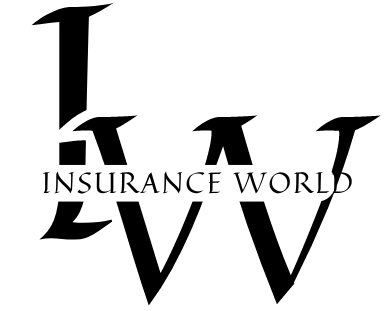Introduction:
Property insurance is a fundamental aspect of risk management for homeowners, renters, landlords, and businesses alike. It provides financial protection against losses or damages to physical assets, including homes, buildings, contents, and personal belongings. Whether you own a home, rent an apartment, or operate a business, property insurance is essential for safeguarding your investments and ensuring peace of mind. In this comprehensive guide, we’ll delve into everything you need to know about property insurance, from understanding its importance to selecting the right coverage to protect your valuable assets.
- Understanding Property Insurance:
- Property insurance is a type of insurance coverage designed to protect against losses or damages to real property (such as homes, buildings, or structures) and personal property (such as furniture, appliances, or belongings).
- It provides financial compensation for repair or replacement costs in the event of covered perils, including fire, theft, vandalism, natural disasters, and other unexpected events.
- Property insurance policies can vary in terms of coverage options, limits, deductibles, and exclusions, allowing policyholders to tailor their coverage to their specific needs and preferences.
- Types of Property Insurance Coverage: a. Homeowners Insurance:
- Homeowners insurance provides coverage for both the structure of the home and personal belongings against perils such as fire, theft, vandalism, and liability risks.It typically includes dwelling coverage, which reimburses for repair or replacement costs of the home’s structure, and personal property coverage, which reimburses for belongings damaged or stolen.Homeowners insurance also includes liability coverage, which protects against lawsuits arising from injuries or property damage to third parties on the insured property.
- Renters insurance provides coverage for personal belongings, liability risks, and additional living expenses for tenants renting a home, apartment, or condominium.It reimburses renters for the cost of replacing or repairing personal belongings damaged or stolen due to covered perils and provides liability coverage for lawsuits arising from accidents or injuries on the rented premises.
- Landlord insurance, also known as rental property insurance, provides coverage for residential or commercial rental properties owned by landlords or property owners.It covers the structure of the rental property, liability risks, loss of rental income due to property damage, and legal expenses for evictions or tenant disputes.
- Commercial property insurance provides coverage for buildings, structures, equipment, inventory, and business assets owned by businesses or commercial property owners.
- It protects against perils such as fire, theft, vandalism, natural disasters, and business interruption, providing financial compensation for repair or replacement costs and loss of income due to property damage.
- Importance of Property Insurance:
- Financial Protection: Property insurance provides financial protection against losses or damages to physical assets, helping homeowners, renters, landlords, and businesses recover from unexpected events without incurring significant financial burdens.
- Asset Preservation: Property insurance helps preserve and protect valuable assets, including homes, buildings, personal belongings, and business assets, ensuring their continued viability and value over time.
- Peace of Mind: Property insurance offers peace of mind and security for policyholders, knowing that their investments are protected against the risks of fire, theft, natural disasters, and other perils.
- Covered Perils and Exclusions:
- Covered Perils: Property insurance policies typically cover a wide range of perils, including fire, lightning, windstorms, hail, theft, vandalism, explosions, and certain types of water damage.
- Exclusions: Certain events or circumstances may be excluded from coverage, such as floods, earthquakes, acts of war, nuclear accidents, intentional acts, wear and tear, or gradual deterioration. It’s essential to review policy terms and conditions carefully to understand coverage limitations and exclusions.
- Factors Affecting Property Insurance Premiums:
- Property Value: The value of the insured property, including the replacement cost or actual cash value, can impact property insurance premiums, with higher premiums for more valuable properties.
- Location: The geographic location of the insured property, including factors such as climate, crime rates, proximity to natural disaster-prone areas, and building codes, can influence insurance premiums and coverage options.
- Construction Materials: The type of construction materials used in the building or structure, including the age, condition, and quality of construction, may affect property insurance premiums and eligibility for coverage.
- Security Measures: The presence of security measures, such as alarm systems, smoke detectors, fire extinguishers, deadbolt locks, and security cameras, can help reduce property insurance premiums by mitigating risks of theft, vandalism, or fire.
- Selecting the Right Property Insurance Coverage:
- Assess Property Risks: Evaluate the potential risks and exposures faced by your property, including risks related to location, construction, occupancy, and environmental factors.
- Identify Coverage Needs: Determine the types of property insurance coverage needed to address your specific risks and liabilities, considering factors such as property value, replacement cost, and personal belongings.
- Compare Policy Options: Research and compare property insurance policies from multiple insurers, reviewing coverage options, premiums, deductibles, and policy terms to find the best fit for your property.
- Customize Coverage: Tailor your property insurance coverage to meet your specific needs and preferences, considering optional endorsements, coverage extensions, and deductible options offered by insurers.
- Seek Professional Advice: Consult with insurance brokers, agents, or advisors for guidance on selecting the right property insurance coverage and maximizing your protection against potential risks and losses.
Conclusion:
Property insurance is a critical component of risk management for homeowners, renters, landlords, and businesses, providing essential financial protection against losses or damages to physical assets. By understanding the basics of property insurance, assessing your coverage needs, and selecting the right policy to protect your valuable investments, you can safeguard your property and ensure peace of mind. Take the time to evaluate your property insurance options, customize your coverage, and implement risk management strategies to mitigate potential risks and losses. With the right property insurance coverage in place, you can protect your investments, preserve your assets, and enjoy greater security and confidence in your property ownership or business operations.

